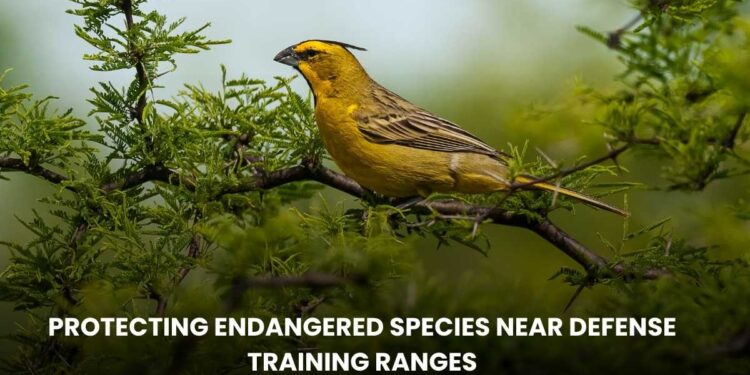Many combat exercises are happening near areas filled with endangered species in the US. If you are speculating about the DoD and the government’s efforts to protect the vulnerable species, you can find everything here.
The Department of Defence is playing a major role in making this true as they are now focusing on environmental protection. Such initiatives are urgently needed since the balance of the environment depends on the protection of animals and their natural habitat.
The reports indicate that military installations sometimes harbour natural habitat left in, and the US mostly lives in land managed by the DoD. However, initiatives under the REPI program and other programs DoD has managed to protect species, but there are some challenges.
What are the DoD legal obligations for protecting endangered species?
The Department of Defence is obliged to protect the endangered or threatened species under the following laws:
- Endangered Species Act:
- According to this act, all government agencies are required to work for the safety and protection of vulnerable and endangered species.
- The ESA is mainly implemented by the US Fish and Wildlife Service and other US agencies.
- The law requires all federal agencies to consult with the US FWS and NOAA Fisheries before funding, authorizing, or carrying out any projects to ensure it does not jeopardize the species.
- The law also prohibits the trade or foreign commerce of the listed endangered and threatened species.
- Sikes Act:
- The act’s main objectives are the conservation, restoration, and sustainable and multifunctional use of natural resources on military facilities.
- The act requires DoD, in cooperation with US FWS, and DoI to work together and work on programs that can safeguard and conserve the natural habitat.
What are the facts and stats on endangered species near defense training ranges?
Before we learn about the US initiative to protect the endangered or threatened species near defence training areas, we should learn about the facts and statistics of the issue:
- The Department of Defense manages about 26 million acres of property in the United States that are home to many endangered species.
- The military lands were preserved from public and private development, which is why they became home to many endangered or threatened species.
- Around 500 are listed as endangered and threatened species living in the military installations or near them.
What steps has DoD taken to protect endangered species near defense training ranges?
The DoD and other federal agencies have taken the following efforts to protect the endangered or threatened species near training ranges:
- Species Recovery Partnership Program:
- It’s a collaborative effort of the US FWS and other agencies to restore the endangered and threatened species through combined efforts or collaboration with numerous partners.
- The efforts involve recovery plans, conservation efforts, and securing funding for the projects to ensure the species can have their own habitat and live.
- REPI:
- This initiative was started by the DoD to help local people maintain the area surrounding military facilities by cooperating with them and protecting endangered animals.
- The initiative has the government, military, and community partnerships to collaborate in the defense of natural resources and vulnerable or endangered species.
- Integrated Natural Resources Management Plans:
- According to the Sikes Act, each military base had to create an INRMP that identified endangered species, mapped the area, and highlighted conservation strategies to balance environmental and military operations.
- The INRMPS are created with the US FWS and state wildlife agencies for the protection of the ecosystem.
What are the projects doing well in protecting endangered species?
With the DoD and the government efforts, let’s see projects that are doing well and protecting the endangered species:
- REPI partners Fort Stewart, Georgia Department of Natural Resources, Fort Benning, the Knobloch Family Foundation, the US Forest Service, and the US FWS have all contributed to the protection of the 7016 acres of habitat in Georgia.
- In Nevada, the REPI partners have protected 11,306 acres of land of sagebrush habitat, as it keeps training areas restricted, safe for greater sage grouse, etc.
- The Eglin Air Force Base was able to restore the breeding ponds for the endangered flatwoods salamander and remove the Okaloosa darter fish from the endangered species list.
The US DoD and other federal agencies have taken steps to protect endangered or threatened species from the acres of land under the defense administration to keep the balance of nature.










